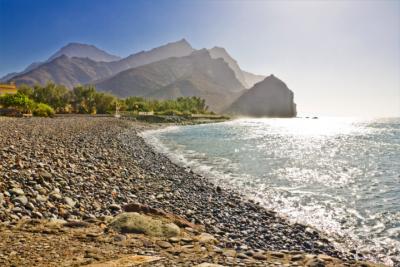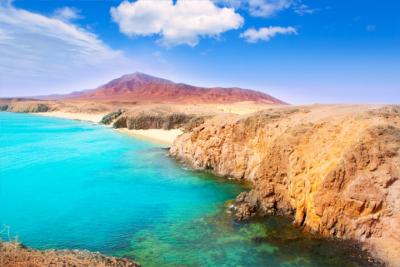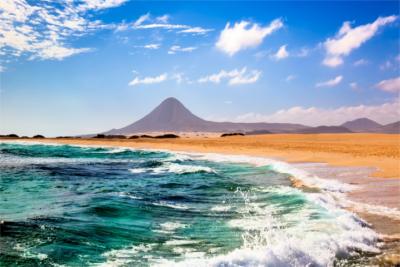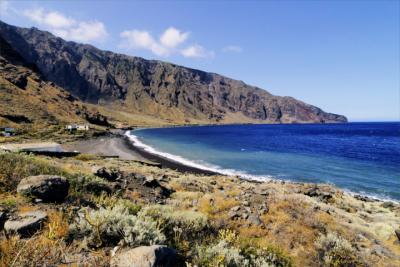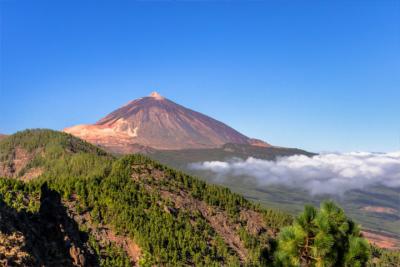Travel Offers
Travelmyne Featureprint
Distance
Gran Canaria - A Paradise for Sun-worshippers
A lot of sun, the wonderful sea and fine sandy beach – that is what sun-worshippers long for in their holidays. Gran Canaria is one of the best destination for fulfilling these wishes because the Canary island is blessed with scenic beaches and numerous sunny days.
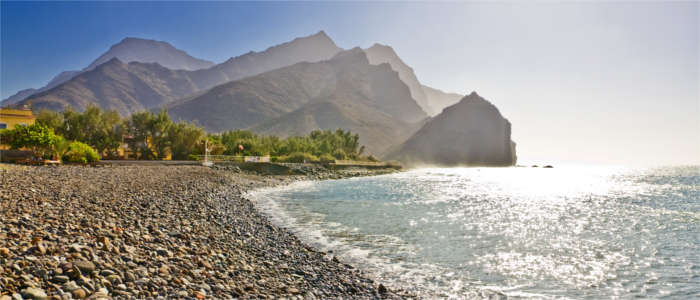
Geography - Harsh mountains, volcanoes and dry valleys
Gran Canaria lies between the Canary islands Tenerife and Fuerteventura in the Atlantic Ocean, about 200 kilometres away from the African mainland. The island is almost round and has a diameter of about 50 kilometres. Harsh mountains and volcanic cones cross the island. The highest peak, the volcano Pico de las Nieves (1,949 m), is located in the centre of the island. Its mountainous landscape slopes towards the coast. Characteristic formations are the dry valleys (barrancos), which run from the peaks into the valley and are filled with mighty rivers by the rain. Gran Canaria is dominated by mild, sunny weather with temperatures between 15 and 25 °C all year, so bathing is possible even in winter.
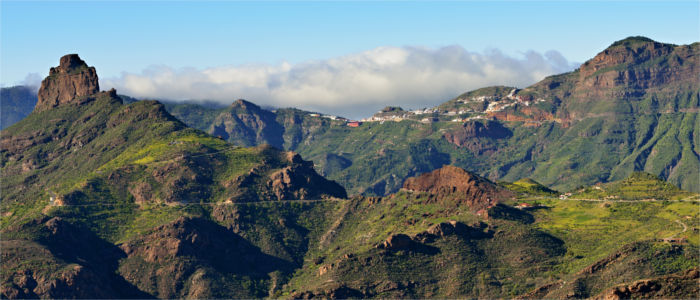
Nature - Between a world of flowers and the desert
The north of the island is colourful. Many brightly coloured plants grow in this relatively humid environment: geraniums, hibiscus, poinsettias with heights of up to four metres as well as laurel, almond and eucalyptus trees. The mountainous landscape is considerably more barren. Pines and shrubs grow on its brown soils. Parts of the rugged mountain valleys were walled up to dam the rivers which emerge during heavy rain and use their water. The lakes which are created in this way constitute spots of life in the barren landscape. In the island's south you find a sandy desert vegetated by euphorbiaceae. Other plants which are characteristic of the island are the date palm and the spectacular dracaeana, which consists of intertwinded trunks and can become several hundred years old. Numerous fine, palm-lined beaches invite visitors to relax on Gran Canaria. They are surrounded by the beautiful sea, which is populated by dolphins, turtles and many fish. You mostly find birds and reptiles on shore.

Natural sights - From the rock in the clouds to Maspalomas' dunes
At a height of about 1,800 metres you find the rock Roque Nublo (rock in the clouds), which is 80 metres high and constitutes the peak of the mountain of the same name. It is Gran Canaria's landmark. The Bandama Natural Monument is characterised by an extraordinary landscape. From the peak of the Pico de Bandama you have a great view of the gigantic vegetated volcanic crater. The island's south is the perfect destination for tourists who want to enjoy the sun and relax at the seaside. Two beautiful beaches are the Playa del Inglés and Maspalomas. The latter is characterised by fascinating dunes which partly consist of washed-up pieces of corals and mussels and create a desert atmosphere. This region borders on a scenic lake. Near Maspalomas you find the Palmitos Park, which is worth seeing because of its large collection of orchids, its aquarium and a lively, colourful parrot show.

Culture - On the tracks of the Guanches
Gran Canaria was originally populated by the native inhabitants Guanches. The Spanish made the island their colony in the 15th century. Since the tourism industry started to evolve on Gran Canaria in the middle of the last century, the island has been the most frequently visited destination of the Canary Islands. Gran Canaria also has a long tradition of art handicraft, which is apparent from classic furniture, high-quality baskets, embroidery and pottery. The Cachorro Canario hats, which are made from animal skins, are also typical of the island. They are produced for both men and women. Music festivals, which show the inhabitants' love of dance and celebrations, take place throughout the year.
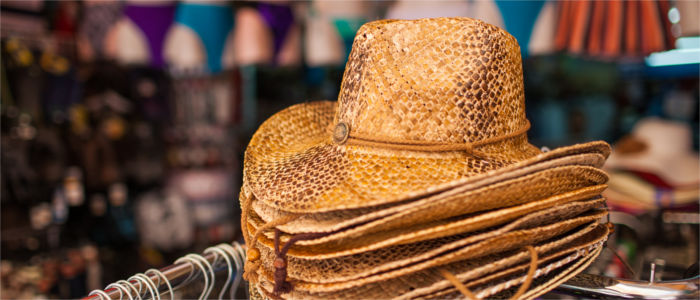
Cultural sights - Idyllic island atmosphere and unique rock caves
When reaching the capital Las Palmas de Gran Canaria travellers truly realise that they are on holiday. They are filled with the relaxed, Mediterranean atmosphere which is ever-present on Gran Canaria. Las Palmas is a cheerful, open-minded city. It has great parks and a wonderful beach, which invites holidaymakers to relax. In addition, you find such appealing attractions as the old town quarter Vegueta with its palaces, museums and churches (e.g. the Catedral de Santa Ana). The Casa de Colón (also known as Columbus House), the harbour and the botanic garden are also worth seeing. An interesting destination for a trip are the caves Cuevas de Bandama. They constitute a prehistoric cave village of the Guanches with a storing place and several residential caves which are decorated with rock paintings, which have not been decoded yet. Gran Canaria is the only island of the Canaries which accommodates these caves, which have stairs, windows and corridors. The idyllic fishermen's village Puerto de Mogán in the island's south is also worth a visit. It is characterised by wonderful alleys and distinctive, white houses. The town Teror is known for its native, beautiful buildings such as the Basílica de Nuestra Señora from the 15th century.

Experience - Riding a camel and exploring the underwater world by submarine
After a relaxed day at the beach, clubs, bars and discos cater for an exciting nightlife with Playa del Ingles as the island's greatest party district. Visitors can also go on catamaran tours or watch dolphins. Those who want to explore the island's heartland should go on safari on the back of a camel, for example from Maspalomas. It is a great way of experiencing the deserts and characteristic gorges at first hand. A ride on the Yellow Submarine in Puerto de Mogán promises an adventure on which you float through the diverse underwater world, which is rich in fish. Even more entertainment is offered by Gran Canaria's amusement parks such as the popular theme park Sioux City. Many of the island's towns have markets, which are a great opportunity for getting to know the inhabitants' way of living. In addition, you get typical products (cigars, hats, baskets, pottery) and the exotic strelitzia (a perennial plant) there. Many local dishes are based on gofio, ground wheat, maize or barley grains. Fish and seafood also play a major role in the island's cuisine. Dishes are often seasoned with the spicy mojo sauce. Jacket potatoes with garlic are also common.
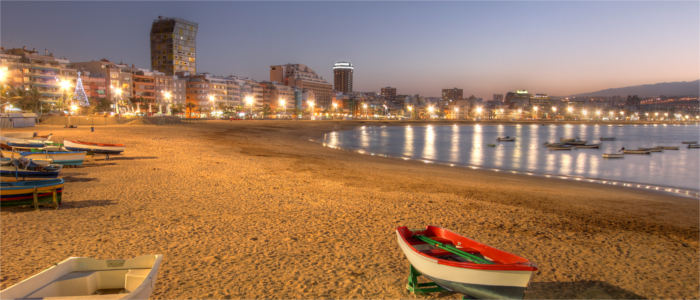
Activities - First-rate conditions for relaxation at the seaside
Gran Canaria's greatest treasure are its gorgeous beaches and the sea, which offer excellent conditions for any kind of water sports. The constant wind is ideal for surfing and windsurfing, especially near Pozo Izquierdo. Other popular activities are sea angling and diving. Travellers can explore the island's heartland by hiking, horseback riding, mountain biking and on tours by quad, beach buggy or Jeep. A thrilling activity is parachuting, including the landing in the middle of Maspalomas' dunes. Furthermore, holidaymakers can view the island from above on a helicopter flight.
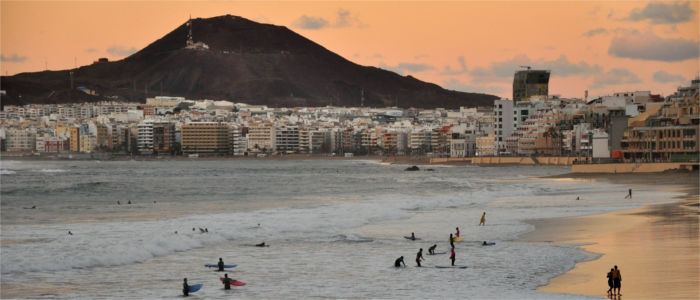
Information
Travellers arrive on Gran Canaria by plane at the airport in Las Palmas (LPA). There are also ship connections from Europe. On the island, you best travel in a rental car or by bus. The inhabitants speak Spanish.
Gran Canaria offers everything sun-hungry holidaymakers could wish for: great beaches, warm weather and many opportunities to have fun at the seaside.

